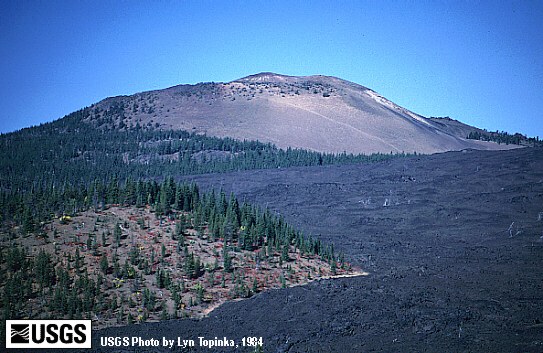
|
Dee Wright Observatory, Oregon 13. Belknap Crater Closeup The Belknap shield volcano and its distal lava tongues cover 98 square kilometers of the crest of the central High Cascades in Oregon. Prior to 2,900 years before present, the first eruptive phase distributed basaltic cinders and ash over a broad area to the northeast and southeast, while basaltic lavas moved 10 kilometers eastward from a growing shield. A second phase, 2,883 years before present (carbon-14), produced an adventive shield of basaltic andesite on the east flank, known as "Little Belknap". The third phase was responsible for the bulk of modern Belknap volcano. It was constructed by effusion of basaltic andesite lavas from the central vent (Belknap Crater), 1,495 years before present (carbon-14), and from a vent 2 kilometers to the south (South Belknap cone), 1,775 years before present (carbon-14). The final eruptions from the northeast base of Belknap Crater sent lavas 15 kilometers westward into the valley of the McKenzie River. ⇦ Back to Page 12 On to Page 14 ⇨Return to Dee Observatory Page 2 |